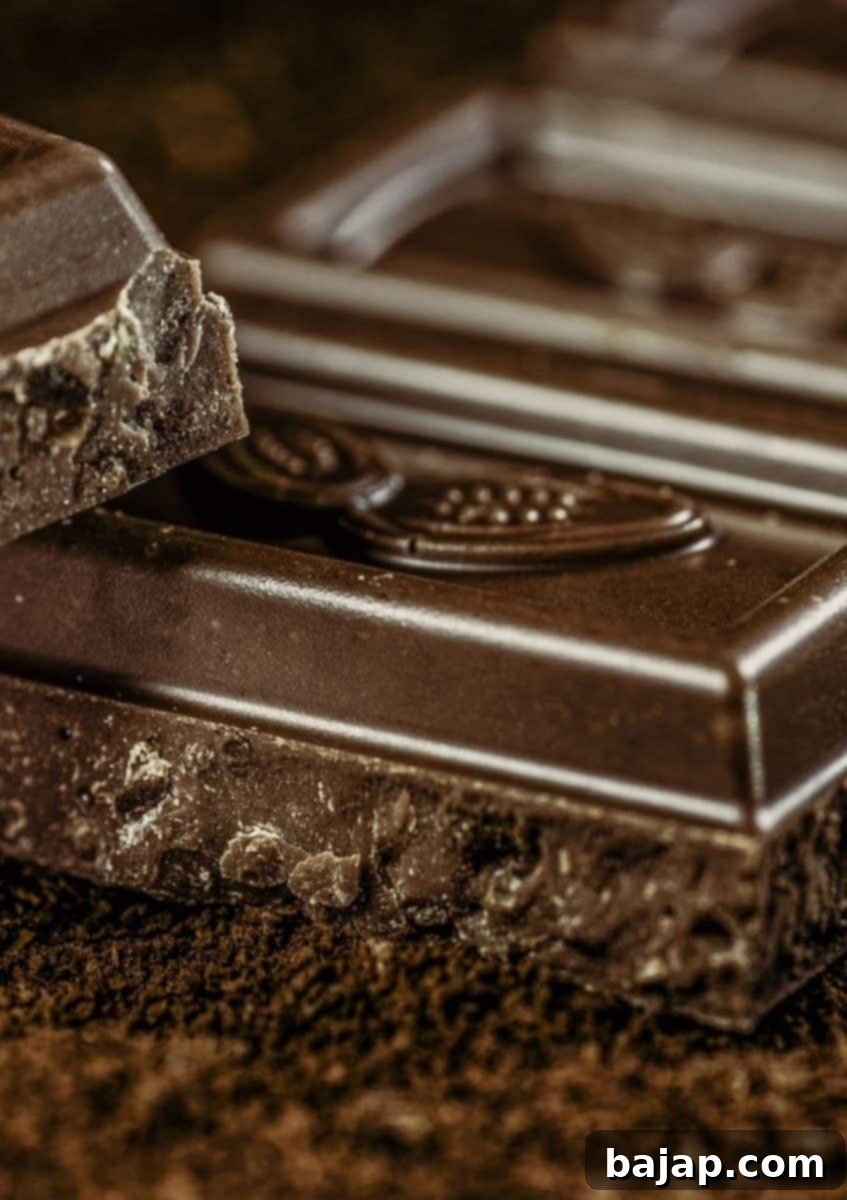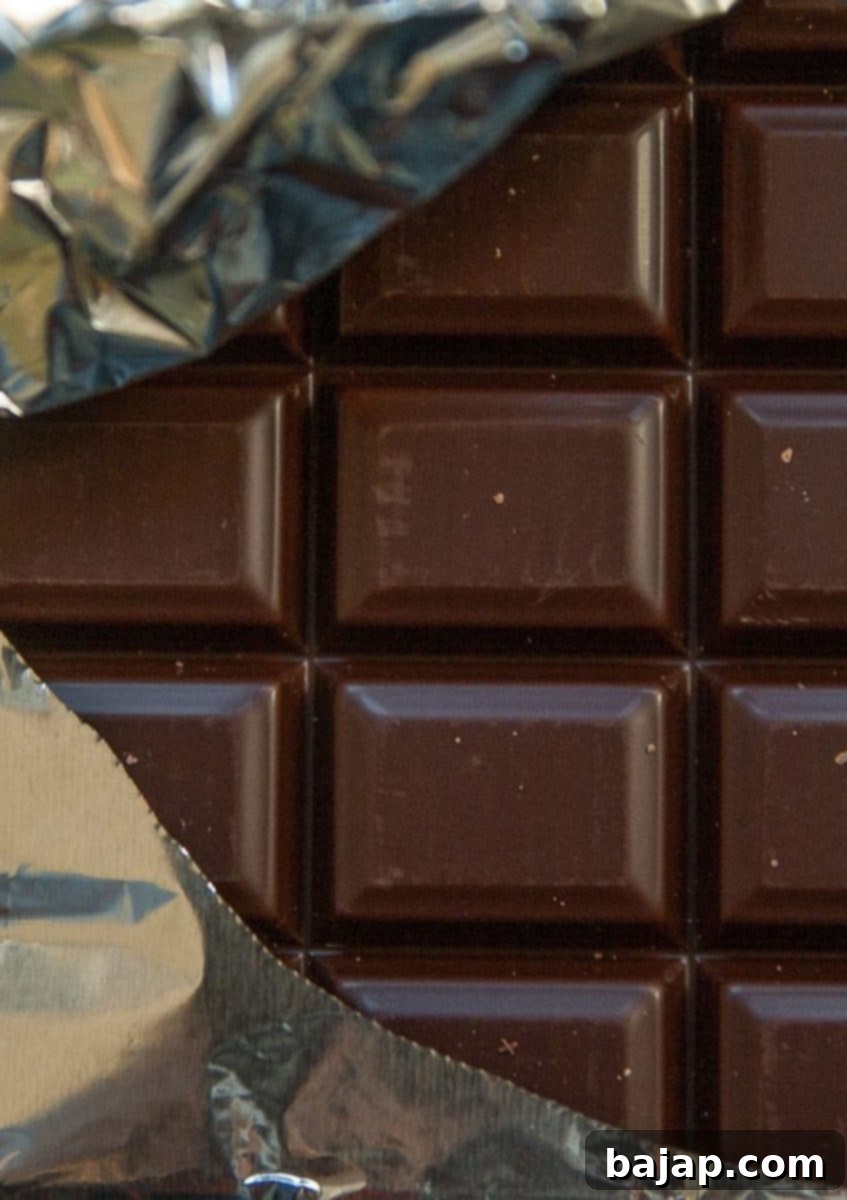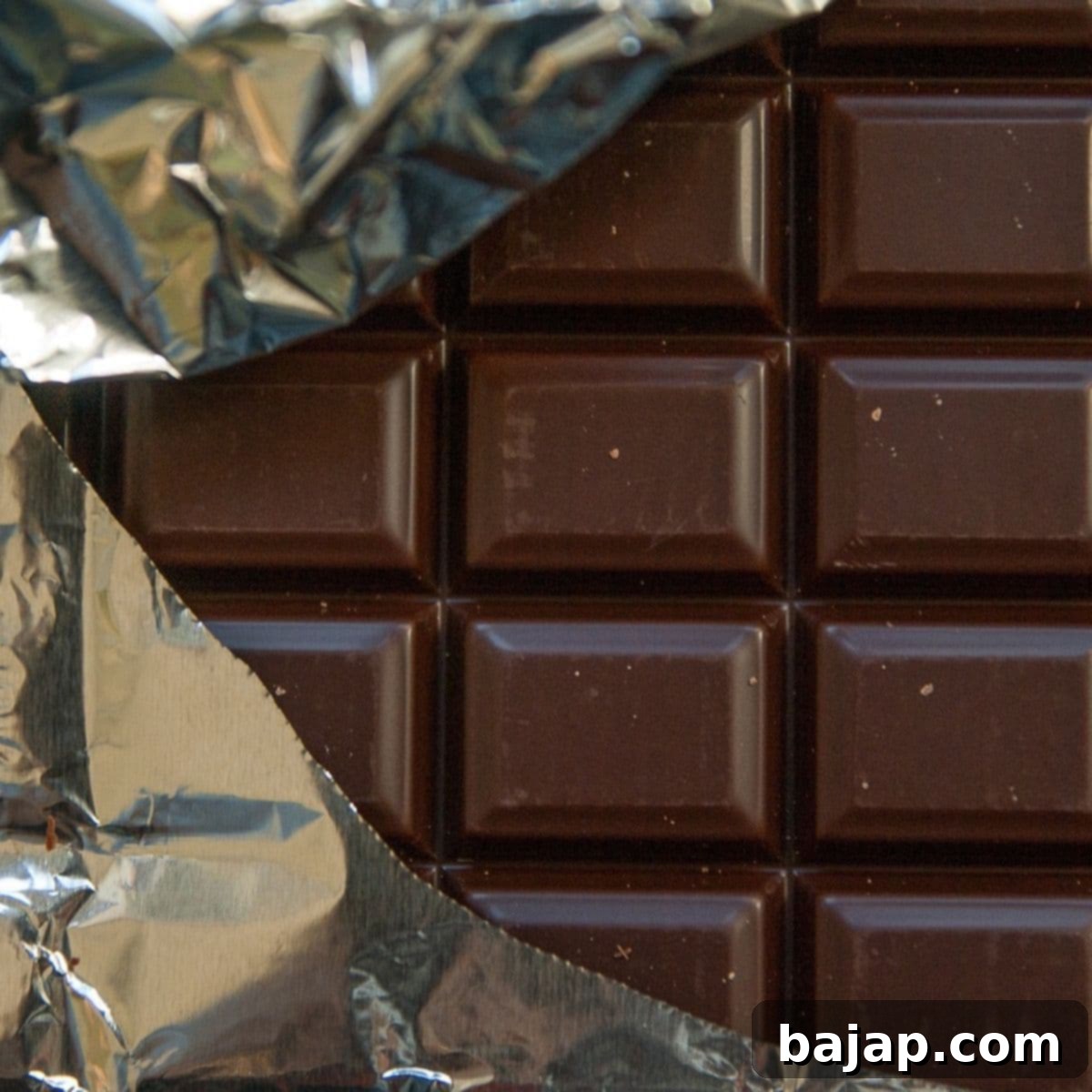The Ultimate Guide to Chocolate: Unveiling Its Flavors, Health Benefits, and Cultural Delights
Welcome to the enchanting world of chocolate, a universe far grander than just a simple sweet treat. It’s a journey steeped in history, rich with diverse flavors, and brimming with delightful surprises. Whether you’re a seasoned connoisseur or just beginning your chocolate adventure, this comprehensive guide will deepen your appreciation for this universally adored indulgence. Prepare to explore the magic that transforms humble cocoa beans into the velvety, complex, and utterly irresistible delight we know and love.

A special thank you to Stef for her inspiring contributions to this wonderful article!
Chocolate 101: Understanding the Diverse World of Flavors
Chocolate is a remarkably versatile food, presenting itself in a spectrum of flavors and textures. From the creamy sweetness of milk chocolate to the intense bitterness of high-percentage dark chocolate, there’s a type for every palate. Let’s explore the three main categories that form the backbone of the chocolate world:
Dark Chocolate: The Connoisseur’s Choice
Often considered the purest form of chocolate, dark chocolate typically contains a high percentage of cocoa solids (ranging from 50% to 100%) and less sugar than its counterparts. It’s revered for its rich, complex flavor profile, which can include notes of fruit, nuts, coffee, earth, and even floral hints, depending on the bean’s origin and processing. The higher the cocoa content, the more intense and less sweet the chocolate will be. Dark chocolate is a favorite among those who appreciate nuanced flavors and its robust, lingering finish.
Milk Chocolate: The Comforting Classic
Milk chocolate, as its name suggests, includes milk powder or condensed milk, which gives it a creamier texture and a sweeter, milder flavor compared to dark chocolate. Invented in Switzerland in the late 19th century, it quickly became a global favorite for its approachable taste and smooth mouthfeel. With cocoa percentages typically ranging from 10% to 40%, milk chocolate offers a comforting sweetness that appeals to a broad audience, making it a staple in countless confections and desserts.
White Chocolate: The Sweet Indulgence
Technically, white chocolate isn’t “chocolate” in the strictest sense, as it doesn’t contain cocoa solids. Instead, it’s made from cocoa butter, sugar, milk solids, and often vanilla. The cocoa butter provides its characteristic creamy texture and delicate flavor. White chocolate offers a sweet, buttery, and often vanilla-infused experience, making it a versatile ingredient for desserts, glazes, and as a complementary flavor to fruits and berries. Its unique profile adds a delightful contrast in many recipes.
How It’s Made: From Beans to Bars – A Journey of Transformation
The journey of a humble cocoa bean transforming into a luxurious chocolate bar is nothing short of magical, involving several intricate steps that refine its flavor and texture. It’s a testament to human ingenuity and dedication.
The Cocoa Harvest and Fermentation
It all begins in tropical regions with the harvesting of cocoa pods from the cacao tree. Once harvested, the pods are opened, revealing moist cocoa beans surrounded by a sweet, white pulp. These beans then undergo fermentation, a crucial step where natural yeasts and bacteria break down the pulp, developing the characteristic chocolate flavor precursors. This process, lasting several days, is vital for the beans to develop their full aromatic potential.
Drying, Roasting, and Winnowing
After fermentation, the beans are dried, typically in the sun, to reduce moisture content and prevent mold. Next comes roasting, which is paramount for bringing out the deep, rich flavors and aromas of chocolate. Roasting also makes the beans brittle, allowing them to be easily cracked and winnowed. Winnowing separates the outer husk from the inner cocoa nibs – the heart of all chocolate products.
Grinding, Conching, and Tempering
The cocoa nibs are then ground into a thick paste called cocoa liquor (despite the name, it contains no alcohol). This liquor can be pressed to separate cocoa butter from cocoa powder. For chocolate making, the cocoa liquor is combined with varying amounts of cocoa butter, sugar, and often milk solids. This mixture then undergoes conching – a lengthy process of kneading and grinding in large machines that develops the chocolate’s smooth texture and refines its flavor, eliminating any lingering acidity or bitterness. Finally, tempering involves carefully raising and lowering the chocolate’s temperature to stabilize its crystalline structure, ensuring a smooth, glossy finish and a satisfying snap when broken. This meticulous process results in the velvety chocolate we cherish.
Pairing Fun: Chocolate and Friends – A Gastronomic Adventure
Move beyond traditional dessert pairings and discover the exhilarating world of chocolate pairings. Its versatility makes it an excellent companion for a surprising array of foods and beverages, transforming any snack into a sophisticated experience.
Chocolate and Wine
Pairing chocolate with wine can be exquisite. Dark chocolate, especially varieties with berry or earthy notes, complements robust red wines like Cabernet Sauvignon, Zinfandel, or Port. Milk chocolate, with its creaminess, pairs beautifully with lighter reds such as Merlot or even a sweet sparkling wine. The key is to match the intensity; a bitter chocolate can overpower a delicate wine, and vice versa.
Chocolate and Cheese
Believe it or not, chocolate and cheese are a match made in heaven for adventurous palates. A sharp cheddar or a salty Parmesan can find balance with a semi-sweet dark chocolate. Blue cheeses, with their pungent notes, can be surprisingly delightful alongside a rich, intensely dark chocolate. The saltiness and creaminess of cheese often bring out hidden complexities in cocoa.
Chocolate and Spices
Embrace the warmth of spices with chocolate. A hint of chili in dark chocolate is a classic combination, offering a fiery kick that enhances the cocoa’s depth. Cinnamon, cardamom, or even a touch of sea salt can elevate the chocolate experience, adding layers of flavor and a delightful contrast. These pairings awaken the senses and provide a truly unique taste adventure.
Chocolate and Fruits, Nuts, and Coffee
Classic pairings include fresh berries (strawberries, raspberries) with dark or milk chocolate, offering a sweet and tart contrast. Roasted nuts like almonds or hazelnuts provide a satisfying crunch and nutty aroma that complements chocolate perfectly. And for coffee lovers, a robust espresso with a piece of dark chocolate is a matchless duo, where the bitterness of the coffee beautifully balances the chocolate’s sweetness and intensity.
Sweet Health Tips: The Goodness of Chocolate for You
Beyond its irresistible taste, chocolate, particularly in its darker forms, offers a surprising array of health benefits. While it’s certainly a treat, enjoying quality chocolate in moderation can contribute positively to your well-being.
A Powerhouse of Antioxidants
Dark chocolate is packed with powerful antioxidants called flavonoids, which are also found in tea, red wine, and many fruits and vegetables. These compounds help combat free radicals in the body, reducing oxidative stress and potentially lowering the risk of chronic diseases. The higher the cocoa content, the more antioxidants chocolate typically contains, making high-percentage dark chocolate a nutritional champion.
Heart Health and Blood Pressure
Studies suggest that the flavonoids in dark chocolate can improve blood flow, lower blood pressure, and even reduce levels of “bad” LDL cholesterol while increasing “good” HDL cholesterol. This makes dark chocolate a potential ally for cardiovascular health, supporting a healthy heart and circulatory system. Of course, these benefits are best realized when chocolate is consumed as part of a balanced diet and healthy lifestyle.
Mood Enhancement and Brain Function
Chocolate has a well-deserved reputation as a mood booster. It contains compounds like tryptophan, which is a precursor to serotonin (a neurotransmitter known for promoting feelings of well-being), and phenylethylamine, which can induce feelings of pleasure and excitement. The stimulating compounds like caffeine and theobromine can also improve alertness and cognitive function. So, that moment of joy you feel after a bite of chocolate isn’t just in your head – it’s a delightful biochemical reaction!
Chocolate and Culture: More Than a Snack – A Global Legacy
Chocolate’s story is deeply intertwined with human history, spanning continents and centuries, evolving from a sacred ritual drink to a beloved global commodity. It’s a fascinating narrative that speaks volumes about culture, trade, and human desire.
Ancient Roots: The Mayans and Aztecs
The history of chocolate begins over 3,000 years ago in Mesoamerica. The Olmec, Maya, and Aztec civilizations revered cacao, often referring to it as the “food of the gods.” They consumed it as a bitter, spiced beverage in religious ceremonies, as a medicine, and even used cocoa beans as a form of currency. This sacred drink, often mixed with chili peppers, vanilla, and other spices, was a far cry from the sweet bars we enjoy today.
Europe’s Discovery and Sweet Transformation
When Spanish conquistadors arrived in the Americas, they brought cacao back to Europe in the 16th century. Initially, the bitter drink was met with skepticism, but once sugar was added, its popularity soared among European aristocracy. Chocolate houses became fashionable gathering places, and by the 18th century, it was a symbol of luxury and refinement. The Industrial Revolution brought innovations like the cocoa press and conching machine, making chocolate more accessible and affordable to the masses.
Modern Traditions and Global Impact
Today, chocolate is celebrated worldwide in countless forms. It’s an indispensable part of holidays like Easter and Christmas, a staple for gifting, and a comfort food for everyday moments. Different cultures have developed their unique chocolate traditions, from Belgian pralines and Swiss milk chocolate to French ganaches and Mexican mole sauces. Chocolate continues to evolve, with artisans constantly experimenting with new flavors and ethical sourcing becoming increasingly important, ensuring its legacy for generations to come.
Sweet Moments: Chocolate, Your Tasty Sidekick for Life
More than just a delicious food, chocolate holds a special place in our lives, acting as a catalyst for cherished memories and a companion in moments both grand and small. It’s a treat that elevates experiences and deepens connections.
Celebrating and Gifting
From birthdays to anniversaries, and holidays to graduations, chocolate is often at the heart of our celebrations. A beautifully crafted box of chocolates makes a thoughtful gift, conveying love, appreciation, or congratulations. Sharing a dessert featuring decadent chocolate becomes a communal experience, creating bonds and sweet memories among friends and family.
Comfort and Solace
In quieter moments, chocolate often serves as a source of comfort. A square of dark chocolate with an afternoon tea, a mug of rich hot chocolate on a cold evening, or a secret stash for a moment of self-indulgence – these small rituals bring a sense of peace and joy. It’s that reliable “tasty sidekick” that’s always there to make things a little better, whether you’re unwinding after a long day or simply enjoying a quiet moment alone.
Chocolate Galore: So Many Yummy Forms to Explore
While the classic chocolate bar is undeniably satisfying, the world of chocolate extends far beyond simple squares. Prepare your taste buds for an extraordinary adventure through a myriad of delightful forms and creations.
Truffles, Pralines, and Bonbons
These exquisite confections are the jewels of the chocolate world. Truffles, often a ganache center coated in cocoa powder or melted chocolate, offer a melt-in-your-mouth experience. Pralines, particularly from Belgium, feature delicate chocolate shells filled with creamy, often nutty, centers. Bonbons encompass a wide variety of bite-sized chocolate-covered delights, each a tiny work of art boasting unique fillings and flavors.
Hot Chocolate and Savory Twists
Nothing says comfort quite like a mug of rich hot chocolate, whether it’s a traditional cocoa mix or a gourmet creation made from melted chocolate and steamed milk. But chocolate isn’t just for sweet applications. Culinary enthusiasts embrace its depth in savory dishes, most famously in Mexican mole sauce, where it adds a complex, earthy richness to stews and meats. Experimenting with a hint of dark chocolate can deepen the flavor profile of various sauces and glazes.
Baking and Dessert Creations
Chocolate is an indispensable ingredient in baking, starring in everything from classic chocolate chip cookies and fudgy brownies to elaborate layer cakes, creamy mousses, and delicate soufflés. Its ability to provide structure, moisture, and unparalleled flavor makes it a favorite among bakers and pastry chefs worldwide. The possibilities are truly endless when chocolate takes center stage in the kitchen.

Smart Indulgence: Enjoying Chocolate the Right Way
To truly appreciate the complex flavors and potential benefits of chocolate, it’s essential to practice mindful consumption. This means savoring each piece and understanding that quality often trumps quantity.
Savoring Every Bite
Instead of mindlessly munching, take the time to truly experience your chocolate. Break off a small piece, let it slowly melt in your mouth, and pay attention to its evolving flavors and textures. Notice the initial bitterness, the emerging sweetness, the nutty or fruity notes, and the lingering finish. This mindful approach not only enhances the pleasure but also helps you feel satisfied with smaller portions.
Choosing Quality and Understanding Sourcing
Opt for high-quality chocolate with clear ingredient lists and transparent sourcing. Look for bars with high cocoa percentages, especially if you’re seeking health benefits. Explore ethical and sustainable brands that support cocoa farmers and environmentally friendly practices. Understanding where your chocolate comes from adds another layer of appreciation to your indulgence.
Now that you’re equipped with this comprehensive guide, go forth and explore the wonderful world of chocolate with new eyes and a refined palate. Discover new favorites, experiment with pairings, and enjoy every mindful moment. And as the festive season approaches, consider enhancing your celebrations with delightful Yumbles Christmas Hampers, offering a curated selection of gourmet treats for yourself or as a thoughtful gift. Happy munching!
🤎 You might also like
- No Bake Cornflake Clusters with Dark Chocolate
- The Essential Chocolate Making Tools Every Home Chocolatier Needs
- Easy Peppermint Bark Recipe with White and Dark Chocolate
- White Chocolate Coconut Truffles
🍫 Download Your Free Chocolate Workbook
